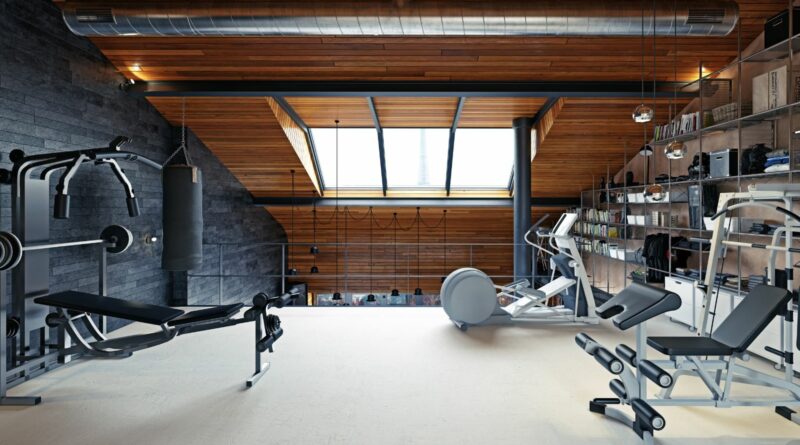Home Gym Design: Maintenance, Organization and Customization Tips
Designing a home gym isn’t just about slapping some equipment in a room. It’s about creating a space that motivates you, caters to your fitness needs, and is efficient in its layout. Whether you’re a fitness enthusiast or a casual exerciser, a well-designed home gym can make a world of difference in your workout routine.
Home Gym Design
Choosing the right gym equipment is as important as designing the gym itself. It’s not just about picking up heavy weights and machines; it’s also about understanding individual needs. The equipment chosen should reflect your fitness goals and personal style.
The first thing to consider is space. Large equipment like treadmills, elliptical trainers, and weight racks will take up a lot of area. If there’s not enough room, the space may feel cramped. Even worse, it could lead to injuries due to lack of movement. So it’s essential to carefully assess how much equipment your space can handle.
Next, let’s talk about diversity. Different equipment targets different parts of the body. For instance, a treadmill focuses on cardio while weights target muscle strength. Strike a balance between cardio and strength training equipment. This balance ensures that all aspects of fitness are covered. Hence, whether you’re looking to lose weight or build muscle, it’s vital to have a mix instead of sticking to one kind of equipment.
Investing in versatile equipment, such as adjustable dumbbells, is smart. They allow for various workouts without occupying much space. Resistance bands, kettlebells, and yoga mats are other examples of versatile and space-saving equipment. Decide on what to include based on what workouts you enjoy the most. Enjoyment is a key factor in maintaining a consistent exercise routine.
Optimising Space
Optimising space is crucial in home gym design. Space dictates how many and what kind of exercise equipment can comfortably fit. In compact spaces, it’s wise to opt for smaller, foldable, or multifunctional exercise equipment. Larger areas may accommodate more extensive cardio machines and a wider range of weightlifting gear.
In planning a home workout area, remember that it’s not just about filling every inch. Go for diversity and versatility, not quantity. Balance the workout space with cardio and strength training equipment. Effective space management can create a functional, comfortable, and accessible home gym, no matter the size.
- Keep an eye on compact cardio machines like rowing machines or compact treadmills. They provide excellent full-body workouts and don’t eat up a lot of space.
- Abandon huge machines if they’re going to cripple your room, causing it to feel cramped. Instead, consider dumbbells, resistance bands, and kettlebells as they are easily stackable and storable.
Invest in quality adjustable workout equipment. Adjustable dumbbells, for example, offer various weight options while having a small footprint. Resistance bands also offer a lot of workout diversities. They’re not only compact, but also inexpensive, making them a budget-friendly choice.
Setting the Mood with Lighting
Lighting in a home gym doesn’t just impact visibility, it’s pivotal in setting the mood and influencing workout intensity. Without proper consideration of a gym’s lighting, workouts can become less motivating and more strenuous. Optimal lighting creates an environment that encourages robust and energetic workouts, augmenting overall productivity.
Adjustable lighting solutions, such as dimmable lights, could transform the gym’s atmosphere based on the user’s preferences and the type of workout. Bright light intensifies energetic activities like cardio, while dimmed light offers a calming ambiance for yoga or stretching. Further, natural light has an invigorating effect and helps save power during peak daylight hours. An ample amount of windows is a valuable addition to any home gym.
Moreover, smart lighting systems add a touch of modernity while also executing distinct tasks. With features like colour-changing options and remote-controlled adjustments, they tailor their performance to an individual’s mood or the tasks in hand.
